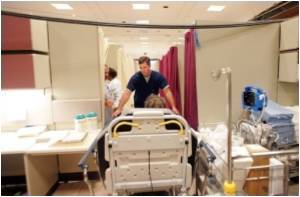Research provides new insights into the evolution of Mucorales fungi, and several molecular pathways that might be exploited as potential therapeutic targets.

‘To halt the highly fatal mucormycosis infection, there are no vaccines or effective therapies available today. There is an urgent need for additional research to develop strategies to protect patients with weakened immune systems.’





"Our research opens the door for identifying and targeting the specific pathways that are required for the development of mucormycosis," said Ashraf S. Ibrahim, PhD, an LA BioMed lead researcher and a contributing author for the study. "The generated data could then be exploited to design novel strategies to pursue treatment, prevention and/or early diagnosis of mucormycosis." The researchers reported on the sequencing of 30 isolates of Mucorales and the study of the transcriptomes of three most common causes of mucormycosis, in response to lung epithelial cells. They identified several pathways that are required for mucormycosis pathogenesis.
Those most at risk of mucormycosis are patients with uncontrolled diabetes ketoacidosis, other forms of metabolic acidosis, treatment with corticosteroids, solid organ or bone marrow transplantation, neutropenia, trauma and burns, such as those suffered by wounded soldiers in Iraq and Afghanistan, malignant hematological disorders and deferoxamine therapy in patients receiving hemodialysis.
Cutaneous necrotizing soft tissue mucormycosis outbreaks in otherwise healthy individuals have also been known to follow natural disasters, as evidenced by the Apophysomyces infections, usually associated with trauma, following the tsunami that devastated Indonesia in 2004 and the tornadoes that occurred in Joplin, MO in June 2011.
"There are no vaccines or effective therapies available today to halt the highly fatal mucormycosis infection," Dr. Ibrahim said. "There is an urgent need for additional research to develop strategies to protect patients with weakened immune systems."
Advertisement








